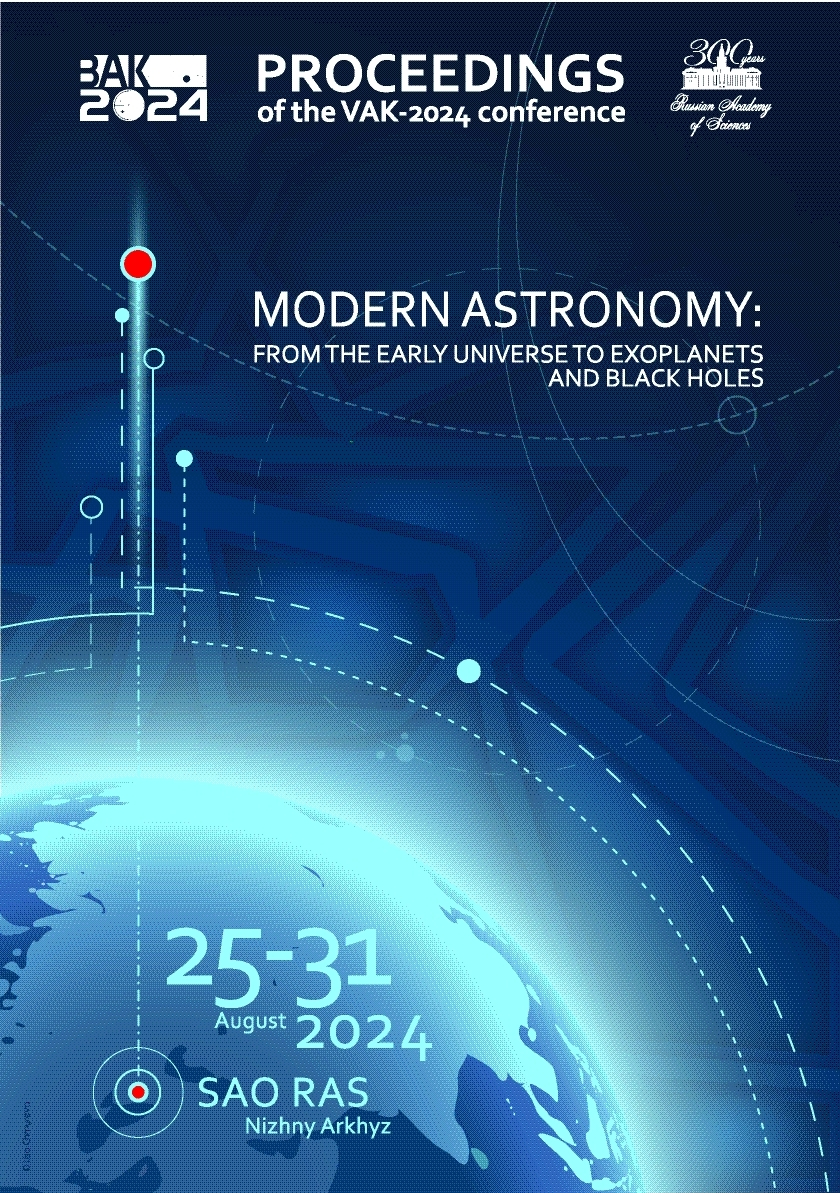UDC 52
UDC 53
UDC 520
UDC 521
UDC 523
UDC 524
UDC 52-1
UDC 52-6
CSCSTI 41.00
CSCSTI 29.35
CSCSTI 29.31
CSCSTI 29.33
CSCSTI 29.27
CSCSTI 29.05
Russian Classification of Professions by Education 03.06.01
Russian Classification of Professions by Education 03.05.01
Russian Classification of Professions by Education 03.04.03
Russian Library and Bibliographic Classification 2
Russian Library and Bibliographic Classification 223
Russian Trade and Bibliographic Classification 614
Russian Trade and Bibliographic Classification 6135
BISAC SCI004000 Astronomy
BISAC SCI005000 Physics / Astrophysics
This article presents the results of the phased integration of the VLBI complex ``Quasar'' into the National Research Computer Network of Russia (NIKS). The VLBI complex ``Quasar'' has implemented e-VLBI technology in Russia, enabling near real-time radio interferometric observations. This technology is critical for high-precision determination of Universal Time, which is essential for fundamental and applied space research, particularly for the GLONASS system. The complex consists of three observatories: ``Badary'' (Republic of Buryatia), ``Zelenchukskaya'' (Karachay-Cherkess Republic), and ``Svetloe'' (Leningrad Region), with a fourth under construction in Primorsky Krai. Each observatory can register data at speeds up to 16 Gbit/s, while the correlator in St. Petersburg can receive data at up to 96 Gbit/s. The current data transmission from ``Badary'' and ``Zelenchukskaya'' is limited to 2 Gbit/s, restricting the complex’s functionality. Increasing the transfer speed to 8 Gbit/s or more would significantly improve capabilities. This article details the results of the data transfer speed tests conducted during hourly sessions to the Center for Correlation Processing of RAS in the NIKS network. Additionally, the article explores options for connecting the nearby academic organizations of the IAA RAS to the NIKS network via fiber-optic cable, enhancing the overall data transmission efficiency and reliability of the VLBI complex. The integration of these observatories into NIKS is expected to enhance the ``Quasar'' VLBI complex, enabling more robust and rapid data processing for various scientific applications.
techniques: interferometric; telescopes
1. Abramov A., Gonchar A., Evseev A., et al., 2023, Information Technologies, 12, p. 615






